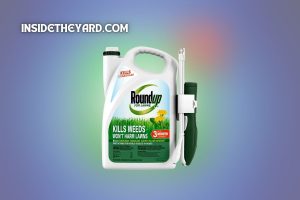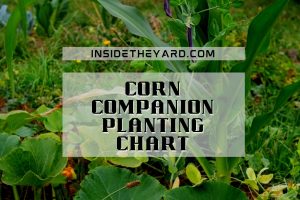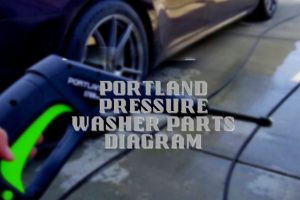Manual For The John Deere L120 Belt!
There are times when it is inconvenient to pay a mechanic to fix every minor issue with your Deere l120.
However, what is fairly practical and could save money is learning about the problems yourself and attempting to remedy them by yourself. I won’t sugarcoat it, getting there will require some time and energy. However, it does not demand a hefty sum of money.
Belts must play a major role in the operation of the Deere l120. A John Deere l120 belt diagram would be useful in case of any problems. We thought that would be a good place to begin. Belt installation on the Deere l120 will also benefit greatly from this.
When replacing the belt on an automatic John Deere l120, the lift lever must be in its lowest position, a wrench must be placed on the idler’s sheave nut, the idler sheave must be brought to the front of the tractor, and the belt tension must be held. Belts are placed by first placing the sheave with the teeth onto the drive shaft, and then releasing the idler sheave to apply tension to the newly attached belt.
In addition to the diagram, we will provide assistance in resolving the most typical problems. And I’ll give you some pointers on how to go about fixing things like replacing the belt or making minor tweaks to it.
Table of Contents
Belt Diagram and Explanation for a John Deere L120
A belt is essential to the functioning of the lawn tractor. If you need a picture of a John Decree L120 belt, you can find one in the post above.

Breakdown of the John Deere L120’s Deck Belt and Its Components
Placed directly below the John Deere L120 tractor. Since there are several moving pieces depicted on the deck belt side of the diagram, we’ll go through each one individually to help you identify it in the event that you need to make a repair.
Lock Nut (10 MM)
One lock nut is for the flat idler pulley, and the other is for the deck idler pulley, both as shown in the image. They generally use stainless steel and have a hexagonal shape.
Deck Idle Belt Pulley
This component does an excellent job of guiding the drive belt along the correct path and maintaining proper tension. It’s dimensions are somewhat larger than the flat idler pulley.
Flat-style idler pulley
The deck belt can be moved using this mechanism to change the position of the central roller driver. Also, this is what you’ll need to deal with the belt’s excess length. Find the black pulley that isn’t doing anything for you.
A Deck Belt
Connecting the crankshaft to the tractor allows the mulching blades to move, chopping the grass. The standard size for the deck belt is a width of 1/2″ and a length of 139″.
Insert Nut for Spindle
This is a special nut that may be used to keep things sealed up tight. It rests atop the sheave that drives the spindle.
Sheave, Spindle-Driven
It has the appearance of a black CD disk. This component’s only purpose is to help keep the deck belt taut so it can move freely.
Tightening Spring
In most situations, this will remain on the idle or pulley. The deck belt’s tension can be changed as needed with this.
Flanged Screw
This screw, which is used just to secure the frame, looks like any other and serves no other purpose. To maintain a tight fit, it rests on the idler arm.
Refining the Bushing
This piece is installed inside the flanged screw to prevent corrosion and uneven torque. It is typically constructed from a rubber-like substance.
The Idle Arm
The belt on a lawn tractor revolves thanks to a simple bracket or frame that holds the belt in place. There are a plethora of screw holes in this section.
John Deere L120 Drive Belt: Components and Diagram
The deck mechanism of the John Deere L120 is where you’ll find the drive belt. There are many moving elements that need to be explained.
1 – Stabilizing Bracket
It’s a sizable brace that helps keep the screws in place, so the drive belt installation is secure.
2 – Rod
This component is mounted on the drive belt’s upper surfaces. It’s a standard rod, around average in length.
3 – Washing Machine
This is just a standard rubber washer used to create a watertight seal.
4 – Cotter Pin
Since this pin can be used in a variety of different applications, you can rest assured that the two parts you’re locking together will stay put.
5 – Bolt
You may attach the arm to the tractor frame with the help of this fitting gear by placing it on top of the arm.
6 – Arm
It is an additional bracket mounted above the driving belt. The screw holes are located in this as well.
7 – Bushing
This component provides dependable safety for the metal-on-metal connection of the arm and lock nut.
8 – Nut Locker
A component that maintains the correct tension on the bolt, arm, and bushing. You can put it together with just a wrench.
9 – Idler
This sturdy component is essential for the drive belt’s optimal tension and smooth operation. It provides support by resting on the belt’s outer border.
10 – Idler Spring
It’s a lot like the “7 no” belt rule on a deck. The only distinction is that this component rides atop the drive belt.
11 – Flat Drive Belt
One uses a flat belt or transmission belt to link the drive shaft of the engine to the input shaft. John Deere L120 drive belt dimensions are approximately 89 inches in length by 5/8 inches in width (L x W) (width).
12 – Idler
It’s a special kind of idler that maintains constant belt tension and smooth belt motion inside the drive mechanism.
13 – Lock Nut
There are eight places on the deck belt where this section is similar to this one. The sole point of reference is that it is noticeably smaller.
14 – Cap Screw
This type of screw has a deep twist to secure the socket within. The clutch is stuck to this piece.
15 – Lock Washer
If you look at the schematic, you’ll notice that it’s a heavy washer used to protect the cap screw from harm.
16 – Clutch
It features a central shaft that provides the necessary tension to keep the large idler in place.
17 – Idler
At its terminus, this component features a connector designed to thread through the clutch’s cover screw and into the clutch itself.
18 – Strap
It’s a second component that mimics the bracket. This piece is square and has mounting holes for use on tractor chassis.
19 – Grommet
This is dark in color and quite little. The tension is maintained and the strap remains securely fastened thanks to its durable rubber construction.
FAQs
Where can I find the part number for a belt for a John Deere l120?
Part number GX20305 is a belt for a John Deere l120. This is the number you’ll need to call in order to get a new belt.
A guide on fine-tuning your John Deere’s drive belt.
The drive belt needs to be adjusted in accordance with the manual’s specific instructions. A combined wrench and socket wrench are usually needed to remove the center bolt on the idler arm of the transmission drive belt and then make the necessary adjustments.
What are the consequences of improper belt installation?
John Deere l120 might have a wide variety of problems. However, a clogged discharge chute would be the most serious problem to surface.
Why might belt tension be off?
When a belt is installed incorrectly, it can result in a lack of tension in the belt and thus, poor performance. Also, it’s a major issue that could cause the rest of the parts to fail at any point.
In Conclusion
What more could you want? We have made every effort to provide the most thorough reference you’ll ever discover on the subject of john deere l120 belts, including a schematic of the belt, an explanation of frequent problems, and instructions for working with the belt.
If so, consider it a success! Don’t wait to get in touch with a pro if you’re having major issues with the belt and can’t figure out what’s wrong.
There are times when this is the only method to keep your machine from entirely breaking down.
More about: John Deere L120







